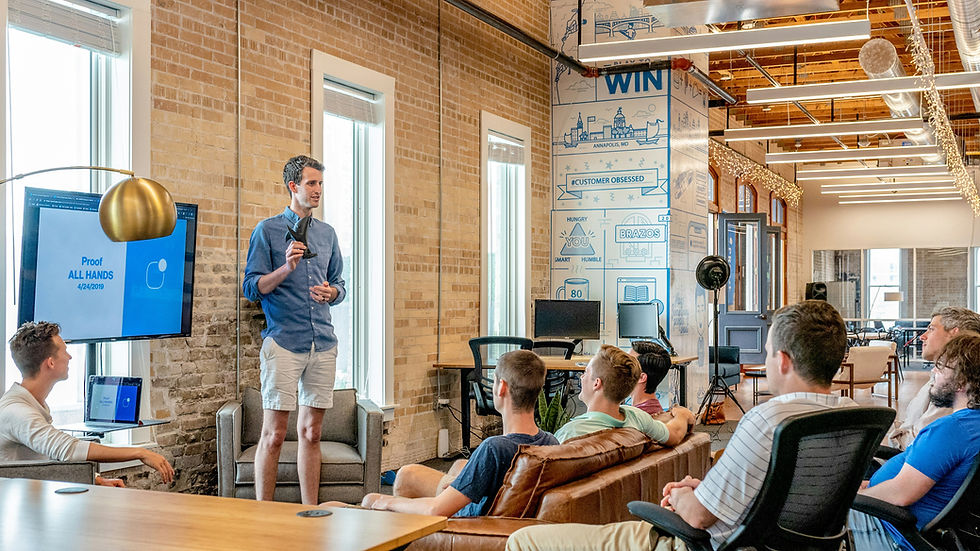How to Build a Winning SaaS Content Marketing Funnel
- Brian Fleming

- Apr 4
- 3 min read
In the fast-paced world of software-as-a-service, it's not enough to create content—you need a structured approach that moves prospects from awareness to conversion. That’s where a well-planned SaaS content marketing funnel comes into play.

Unlike traditional marketing, content in SaaS isn't just a way to fill up your blog. It’s a key growth engine that drives organic traffic, nurtures leads, and accelerates the buyer journey. In this article, we’ll walk through the stages of a high-performing content funnel and how to align it with your SaaS lead generation strategy.
What Is a SaaS Content Marketing Funnel?
A content marketing funnel is a strategic framework that maps content types and messaging to specific stages of the buyer journey. For SaaS companies, this typically involves three key stages:
Top-of-Funnel (TOFU): Attract attention and generate awareness
Middle-of-Funnel (MOFU): Nurture interest and educate
Bottom-of-Funnel (BOFU): Convert leads and drive decision-making
Each stage should deliver tailored content that addresses the prospect’s mindset and needs at that moment.
Why SaaS Companies Need a Funnel-Driven Approach
For SaaS businesses, the content funnel plays a critical role in scaling customer acquisition without scaling ad spend. It allows you to:
Target buyers based on intent
Position your product as a solution at the right time
Support long sales cycles with educational content
Improve lead quality through segmentation and nurturing
Simply put, a content funnel adds structure and purpose to your content production—transforming it from noise into a growth engine.
Top-of-Funnel: Attracting the Right Audience
Content Goals:
Build awareness
Answer questions and spark curiosity
Drive organic traffic
At the TOFU stage, your audience is just becoming aware of their problem or seeking inspiration. They aren’t ready to hear about your product yet.
Best Content Types:
Blog posts targeting broad pain points (e.g., “How to Manage Remote Teams Effectively”)
Educational videos
Infographics
SEO-driven guides
Social media content
Example:
A SaaS project management tool might publish an in-depth article titled “10 Signs Your Team Needs Better Workflow Automation.” It addresses a common frustration, educates the reader, and subtly sets the stage for the tool as a potential solution.
Middle-of-Funnel: Educate and Build Trust
Content Goals:
Show solutions and establish credibility
Introduce your product as a potential fit
Capture leads for nurturing
At this stage, prospects are aware of their problem and are researching solutions. This is your opportunity to position your product without being overly promotional.
Best Content Types:
Comparison posts (e.g., “Trello vs. Asana vs. [Your Tool]”)
Webinars and recorded demos
Case studies
Email nurture sequences
Whitepapers or gated content
Tactic for SaaS Lead Generation:
Use gated assets to collect emails. For example, offer a downloadable “Workflow Automation Checklist” in exchange for an email address. This action signals interest and feeds your SaaS lead generation engine.
Bottom-of-Funnel: Drive Conversions
Content Goals:
Reduce friction
Address objections
Nudge toward decision
BOFU content targets high-intent prospects evaluating your product or ready to convert. Your focus here is to make that conversion as smooth and compelling as possible.
Best Content Types:
Product landing pages
Free trial onboarding emails
ROI calculators
Customer success stories
Personalized video demos
Live chat and support documentation
Example:
A BOFU landing page for a time-tracking SaaS might include a testimonial carousel, a side-by-side comparison with top competitors, and a CTA to “Start Your Free 14-Day Trial.”
Integrating SEO Into Your Funnel
For a content funnel to deliver compounding results, you need a strong SEO foundation. Here’s how to align your keyword strategy with the funnel:
TOFU: Target high-volume informational keywords (e.g., “how to build a remote team”)
MOFU: Focus on solution-aware queries (e.g., “best project management tools”)
BOFU: Capture branded and high-intent terms (e.g., “[Your Brand] vs Monday.com”)
Don’t forget to interlink related content across the funnel stages to improve site engagement and help readers naturally progress toward conversion.
Measuring Content Funnel Performance
To optimize your SaaS content marketing efforts, track KPIs at each funnel stage:
TOFU: Organic traffic, time on page, bounce rate
MOFU: Email opt-ins, webinar signups, gated content downloads
BOFU: Demo requests, free trial starts, conversion rates
Use analytics tools like Google Analytics, HubSpot, or Mixpanel to monitor how users move through your content journey—and where they drop off.
Final Thoughts
A great piece of content might generate clicks. A great content marketing funnel generates customers.
By aligning your content with each stage of the buyer’s journey, you not only improve engagement and trust—you also increase your chances of turning traffic into qualified leads and loyal customers. When executed well, SaaS content marketing becomes one of your most cost-effective SaaS lead generation tools.
Start by mapping your existing content to funnel stages. Identify gaps. Then build a plan to guide prospects from first touch to free trial—and beyond.
StartupCMO provides flexible, cost-effective strategic marketing and growth leadership to B2B startups and scaling businesses without the commitment and cost of a full-time chief marketing officer. To find out how I can help accelerate your growth, schedule a free strategy session.


